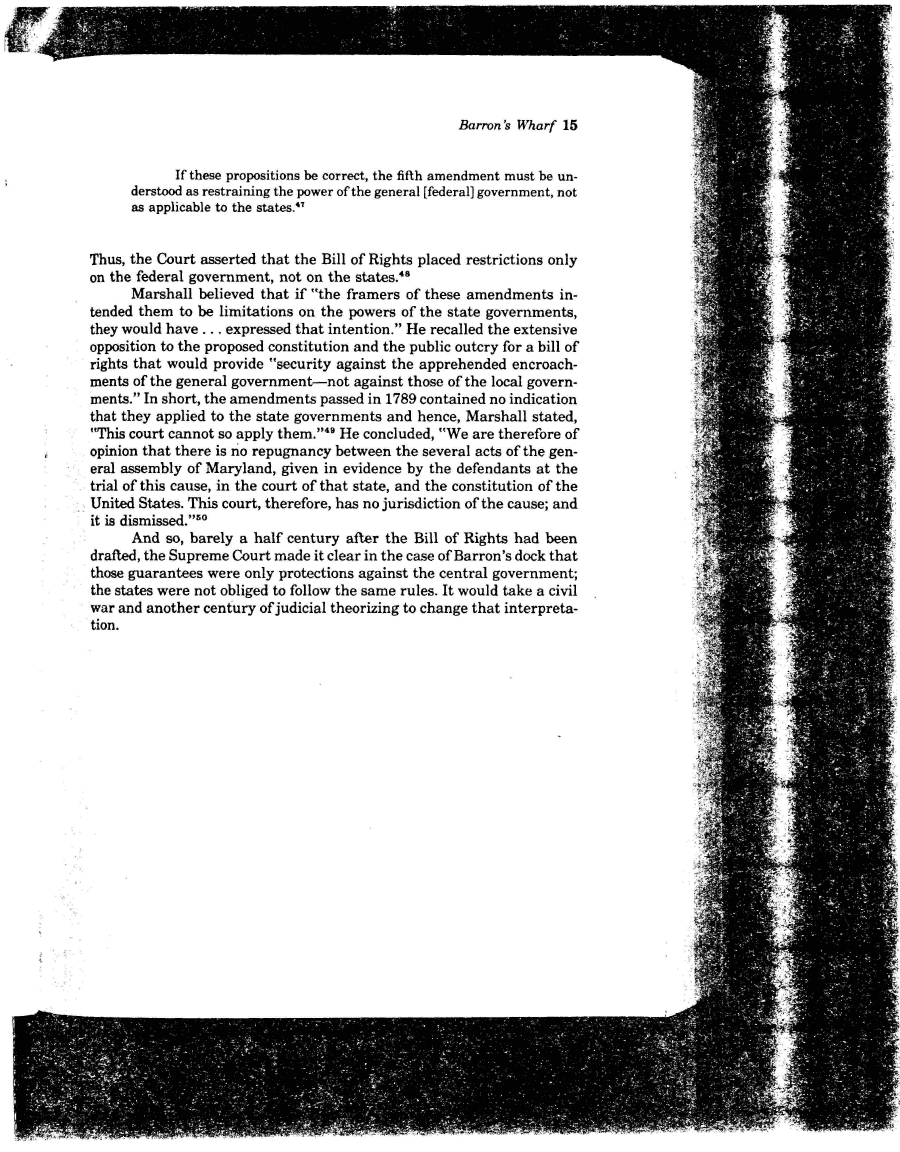|
Barren's Wharf 15
If these propositions be correct, the fifth amendment must be un-
derstood as restraining the power of the general [federal] government, not
as applicable to the states.47
Thus, the Court asserted that the Bill of Rights placed restrictions only
on the federal government, not on the states.48
Marshall believed that if "the framers of these amendments in-
tended them to be limitations on the powers of the state governments,
they would have ... expressed that intention." He recalled the extensive
opposition to the proposed constitution and the public outcry for a bill of
rights that would provide "security against the apprehended encroach-
ments of the general government—not against those of the local govern-
ments." In short, the amendments passed in 1789 contained no indication
that they applied to the state governments and hence, Marshall stated,
"This court cannot so apply them."49 He concluded, "We are therefore of
opinion that there is no repugnancy between the several acts of the gen-
eral assembly of Maryland, given in evidence by the defendants at the
trial of this cause, in the court of that state, and the constitution of the
United States. This court, therefore, has no jurisdiction of the cause; and
it is dismissed."50
And so, barely a half century after the Bill of Rights had been
drafted, the Supreme Court made it clear in the case of Barren's dock that
those guarantees were only protections against the central government;
the states were not obliged to follow the same rules. It would take a civil
war and another century of judicial theorizing to change that interpreta-
tion.
|

